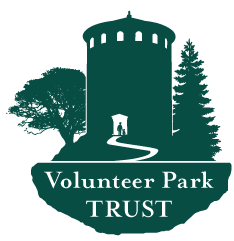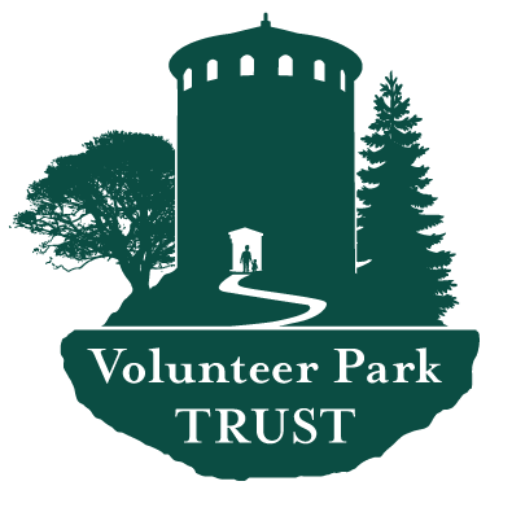THE HISTORY OF SEATTLE’S CROWN JEWEL: VOLUNTEER PARK
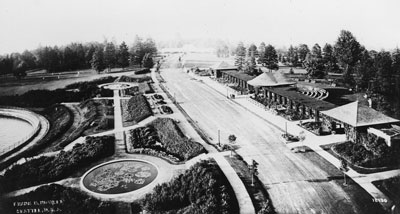 Background
Background
Centrally located on Seattle’s Capitol Hill, Volunteer Park is the most complete and well-preserved example of the Olmsted Brothers’ design approach for Seattle city parks. This urban park was designed in the naturalistic/ picturesque American romantic style closely associated with the Olmsted firm. Volunteer Park incorporates a pre-existing reservoir, one of the first two built as part of Seattle’s water supply system. The park also includes: a water storage standpipe/observation tower, the Seattle Asian Art Museum, a Conservatory and related support facilities, a shelter house, a bandstand, a play area with wading pool, and tennis courts. The park plays a dual role as a citywide destination park and as a neighborhood park in one of Seattle’s most prominent neighborhoods. It is often referred to as the crown jewel of Seattle’s Olmsted-designed park system.
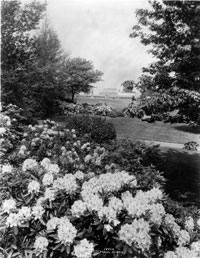 History
History
In 1876, Seattle purchased 40 acres on Capitol Hill. First used as a cemetery, it was converted to park use in 1887 (burials were relocated to the adjoining Masonic (now Lakeview) Cemetery). Originally named Lake View Park, then City Park, Volunteer Park was given its current name in 1901 in commemoration of Spanish-American War veterans. In succeeding years, eight additional acres were added to the southwest corner of the park. Meanwhile, the water system reservoir was completed in 1899.
In 1903, Seattle’s Board of Park Commissioner hired the Olmsted Brothers firm to produce a plan for a park system. John C. Olmsted came to Seattle and developed an extensive plan for a system of parks and boulevards. The plan consisted of smaller parks dispersed throughout the city and larger parks connected by a series of boulevards. Budget constraints prevented the city from hiring the firm to design all of the parks in the system, but they did commission plans for Volunteer Park. The resulting plans comprise the most complete set of Olmsted Brothers firm plans for any of Seattle’s parks and boulevards.
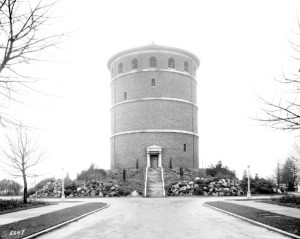 Olmsted Design
Olmsted Design
Designed in the naturalistic, pastoral American romantic style closely associated with the Olmsted firms, Volunteer Park is a passive recreation urban park and a city-wide destination for visitors and residents. In the center of the park, the concourse along the ridge top between the water tower and the Conservatory is flanked by an allée of trees. It crosses a perpendicular view axis running west from the museum across the reservoir to the city and mountains beyond. Along this view axis, the formal landscape descends in symmetrical terraces from the concourse to the reservoir. The concourse axis continues as far south of the Water Tower into the Capitol Hill neighborhood as 14th Avenue East. A winding carriage road traverses the sloping western half of the park.
In keeping with their belief that people derive psychological benefits from experiencing natural scenery, the Olmsted plan for Volunteer Park emphasizes space for passive recreation and a variety of activities. It features many of the design elements most closely associated with the Olmsted firm: irregular open lawns bordered by shrub and tree plantings; carefully framed and modulated views of borrowed landscape; one or more circulation loops and areas intended for crowds and social interaction which are treated in a more formal manner.
-
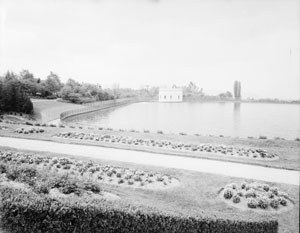 Significant Changes
Significant Changes - Overall, there have been relatively few significant changes to the park’s design. The most notable alteration was the destruction of the original concert pergola to make way for the art museum in 1931. Other, more minor changes include alterations to the museum forecourt, (c. 1990 to present), a redesign of the children’s play area (1991), and construction of a new greenhouse in the maintenance area (1991). Volunteer Park Trust replaced the former aging amphitheater structure in 2022 with a thoughtfully designed, ADA-compliant new facility by the the award-winning architectural team at ORA. The park retains an overall integrity of location, design, setting, materials, workmanship, feeling, and association.
For more historic information on Volunteer Park visit this page at HistoryLink.org.
For research on Volunteer Park’s Olmsted design visit this page at Olmsted Online.
